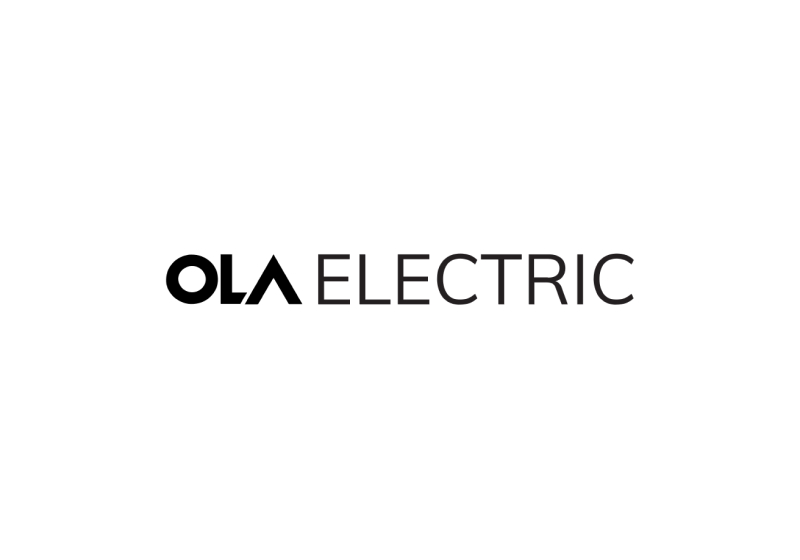Ola Electric: Riding the Wave of E-Motorcycle Innovation
August 17, 2024, 4:26 am

Location: India, Karnataka, Bengaluru
Employees: 1001-5000
Founded date: 2017
Total raised: $3.07B
Ola Electric is making waves in the bustling Indian two-wheeler market. With a recent surge in valuation to nearly $7 billion, the company is positioning itself as a formidable player in the electric vehicle (EV) landscape. The launch of its new line of e-motorcycles is not just a product release; it’s a bold statement. It’s a declaration of war against traditional gasoline-powered bikes and a challenge to established giants like Bajaj Auto, TVS Motor, and Hero Motocorp.
The e-motorcycle market in India is ripe for disruption. Two-wheelers are the lifeblood of Indian transportation, with 18 million units sold last year alone. Ola Electric is stepping into this arena with a plan that could reshape the industry. The company aims to reduce costs by manufacturing its own batteries. This move is crucial. Batteries are the heart of any electric vehicle. By controlling this component, Ola Electric can potentially lower prices and improve margins.
Investors are taking notice. The company’s shares jumped 20% following the motorcycle launch, reflecting a growing confidence in its strategy. Just a week prior, Ola Electric had gone public, raising $734 million in an initial public offering (IPO). The stock has since soared, climbing 75% from its launch price. This is not just a flash in the pan; it signals a robust belief in the future of electric mobility in India.
However, the road ahead is not without obstacles. Ola Electric reported a wider first-quarter loss, a setback attributed to subsidy cuts. These cuts could hinder the adoption of electric vehicles, as consumers often rely on incentives to make the switch from traditional vehicles. The company must navigate these challenges while maintaining momentum.
The competition is fierce. Ola Electric’s rivals are not sitting idle. Bajaj Auto, TVS Motor, and Hero Motocorp have established themselves in the market. They have brand loyalty and extensive distribution networks. Ola Electric must carve out its niche quickly. The introduction of e-motorcycles is a strategic move to tap into both the mass and premium segments of the market. This dual approach could attract a broader customer base, from budget-conscious buyers to those seeking high-end features.
HSBC has given Ola Electric a "buy" rating, citing regulatory support and the company’s potential to reduce costs. This endorsement is significant. It suggests that analysts believe in the company’s vision and its ability to execute. The market is watching closely. Investors are eager to see if Ola Electric can deliver on its promises.
The challenges of EV adoption in India are well-documented. Concerns about vehicle range, insufficient charging infrastructure, and low resale value continue to plague the market. Ola Electric must address these issues head-on. Building a reliable charging network is essential. Without it, even the best electric motorcycles may struggle to gain traction.
The company’s plan to equip its vehicles with proprietary batteries by next year is ambitious. If successful, it could provide a competitive edge. It would also signal a shift towards greater localization in the EV supply chain. This is crucial for India, where reliance on imports for critical components can be a vulnerability.
Ola Electric’s entry into the motorcycle segment is a calculated risk. It’s a move that could redefine the landscape of two-wheeler transportation in India. The company is betting on the electrification trend, which is gaining momentum globally. As environmental concerns rise, consumers are increasingly looking for sustainable alternatives. Ola Electric is poised to capitalize on this shift.
The timing of this launch is also noteworthy. As global attention turns to electric vehicles, India is emerging as a key player in the EV revolution. The government’s push for greener transportation solutions aligns with Ola Electric’s mission. This synergy could provide the company with the support it needs to thrive.
In conclusion, Ola Electric is riding a wave of innovation and opportunity. The launch of its e-motorcycles marks a pivotal moment in the company’s journey. With a strong valuation and a clear strategy, it is well-positioned to challenge established players in the market. However, the path is fraught with challenges. The company must navigate competition, consumer concerns, and market dynamics. If it can successfully address these issues, Ola Electric could become a leader in India’s electric two-wheeler revolution. The road ahead is long, but the destination is promising.
The e-motorcycle market in India is ripe for disruption. Two-wheelers are the lifeblood of Indian transportation, with 18 million units sold last year alone. Ola Electric is stepping into this arena with a plan that could reshape the industry. The company aims to reduce costs by manufacturing its own batteries. This move is crucial. Batteries are the heart of any electric vehicle. By controlling this component, Ola Electric can potentially lower prices and improve margins.
Investors are taking notice. The company’s shares jumped 20% following the motorcycle launch, reflecting a growing confidence in its strategy. Just a week prior, Ola Electric had gone public, raising $734 million in an initial public offering (IPO). The stock has since soared, climbing 75% from its launch price. This is not just a flash in the pan; it signals a robust belief in the future of electric mobility in India.
However, the road ahead is not without obstacles. Ola Electric reported a wider first-quarter loss, a setback attributed to subsidy cuts. These cuts could hinder the adoption of electric vehicles, as consumers often rely on incentives to make the switch from traditional vehicles. The company must navigate these challenges while maintaining momentum.
The competition is fierce. Ola Electric’s rivals are not sitting idle. Bajaj Auto, TVS Motor, and Hero Motocorp have established themselves in the market. They have brand loyalty and extensive distribution networks. Ola Electric must carve out its niche quickly. The introduction of e-motorcycles is a strategic move to tap into both the mass and premium segments of the market. This dual approach could attract a broader customer base, from budget-conscious buyers to those seeking high-end features.
HSBC has given Ola Electric a "buy" rating, citing regulatory support and the company’s potential to reduce costs. This endorsement is significant. It suggests that analysts believe in the company’s vision and its ability to execute. The market is watching closely. Investors are eager to see if Ola Electric can deliver on its promises.
The challenges of EV adoption in India are well-documented. Concerns about vehicle range, insufficient charging infrastructure, and low resale value continue to plague the market. Ola Electric must address these issues head-on. Building a reliable charging network is essential. Without it, even the best electric motorcycles may struggle to gain traction.
The company’s plan to equip its vehicles with proprietary batteries by next year is ambitious. If successful, it could provide a competitive edge. It would also signal a shift towards greater localization in the EV supply chain. This is crucial for India, where reliance on imports for critical components can be a vulnerability.
Ola Electric’s entry into the motorcycle segment is a calculated risk. It’s a move that could redefine the landscape of two-wheeler transportation in India. The company is betting on the electrification trend, which is gaining momentum globally. As environmental concerns rise, consumers are increasingly looking for sustainable alternatives. Ola Electric is poised to capitalize on this shift.
The timing of this launch is also noteworthy. As global attention turns to electric vehicles, India is emerging as a key player in the EV revolution. The government’s push for greener transportation solutions aligns with Ola Electric’s mission. This synergy could provide the company with the support it needs to thrive.
In conclusion, Ola Electric is riding a wave of innovation and opportunity. The launch of its e-motorcycles marks a pivotal moment in the company’s journey. With a strong valuation and a clear strategy, it is well-positioned to challenge established players in the market. However, the path is fraught with challenges. The company must navigate competition, consumer concerns, and market dynamics. If it can successfully address these issues, Ola Electric could become a leader in India’s electric two-wheeler revolution. The road ahead is long, but the destination is promising.


